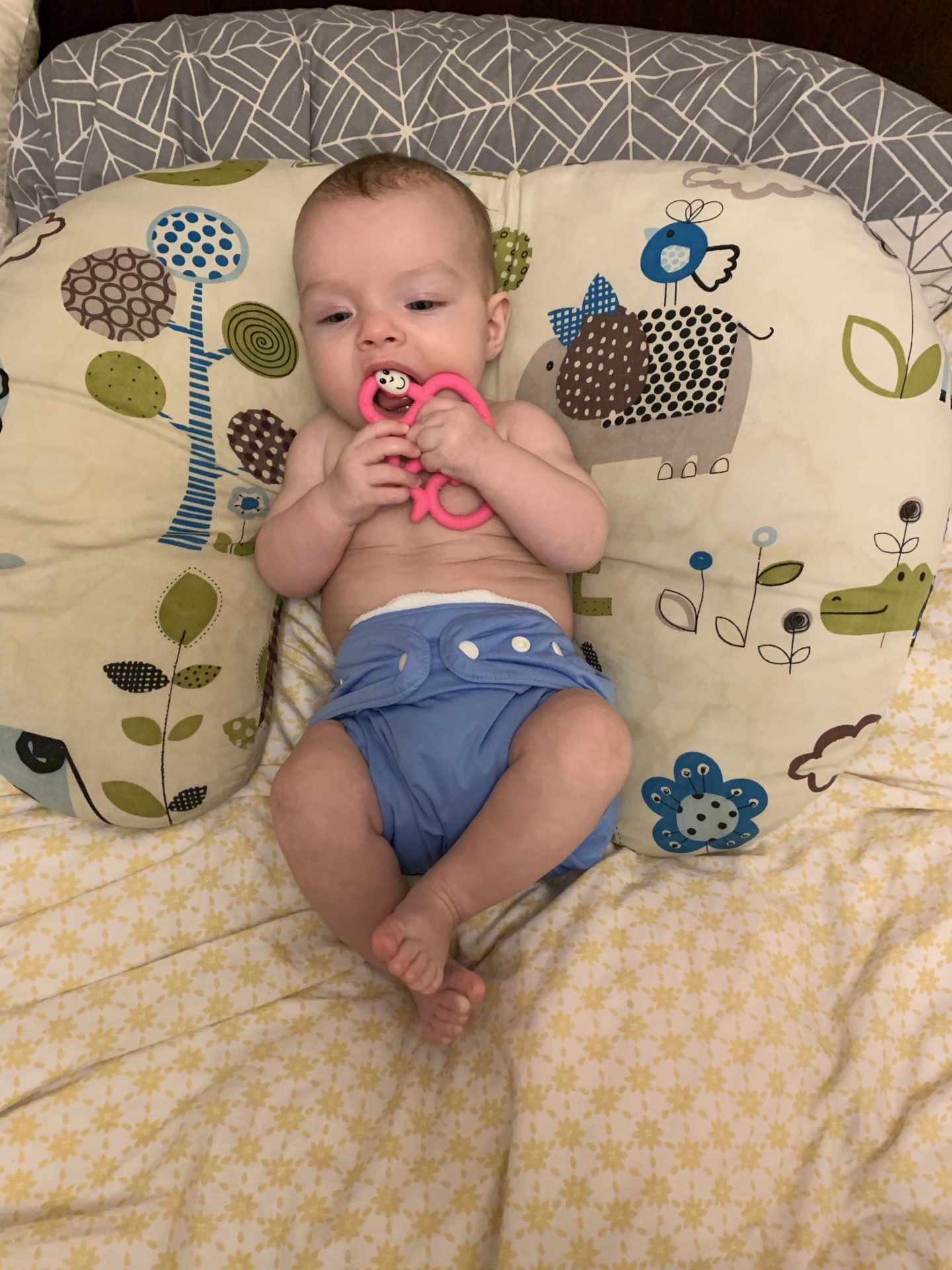
Tilly is one now and she has been wearing cloth nappies since she was about six weeks old. I didn’t use reusable nappies with Leo and Alex, I thought it would be too much like hard work and I could never really understand what happened with all the poo. During my pregnancy with Tilly I was reading more and more about reusable nappies, and Swansea Council has a great cashback scheme to encourage more parents to choose cloth, so I decided to give reusable nappies a try. Something that always put me off about reusable nappies was that I just didn’t understand how they worked, what brand was best and, like I said earlier, the poo issue. For any parents feeling the same, wanting to try cloth but not sure where to begin, I have put together this beginners guide to switching to reusable nappies. I’m going to share how we got started with cloth nappies, the reusable nappy brands we use and a simple guide to washing cloth nappies. I hope you find this post useful and I’d love for you to share it with any of your eco conscious friends who are expecting a baby.
A beginners guide to reusable nappies.
Getting started with cloth nappies.
When it comes to cloth nappies there are so many different brands. I have to admit, when I first started researching switching from disposable nappies I was really overwhelmed. I was pointed in the direction of The Nappy Lady website. There is a great questionnaire on The Nappy Lady that helps you figure out what nappies best suit your family and your budget. I did the quiz and was recommended Terry nappies and/or muslins as initially my budget was quite low. Personally, I decided a flat nappy and figuring out the folds etc was more work than I was willing to put in at nappy changes but The Nappy Lady gives you lots of different options and provides you with an estimate cost.
The Nappy Lady questionnaire is really useful for getting a general idea of how much different nappies cost and what options are out there. Something else you should be aware of is the cloth nappy world seems to have its own language. You don’t need to know what all the acronyms stand for (a year as a cloth bum mum and I still don’t know what most of them mean) but people in Facebook groups seem to use the nappy lingo and it makes life a bit easier if you know what they are talking about. I used this website to help me understand what all the other reusable nappy parents were talking about, it was like my cloth bum dictionary!
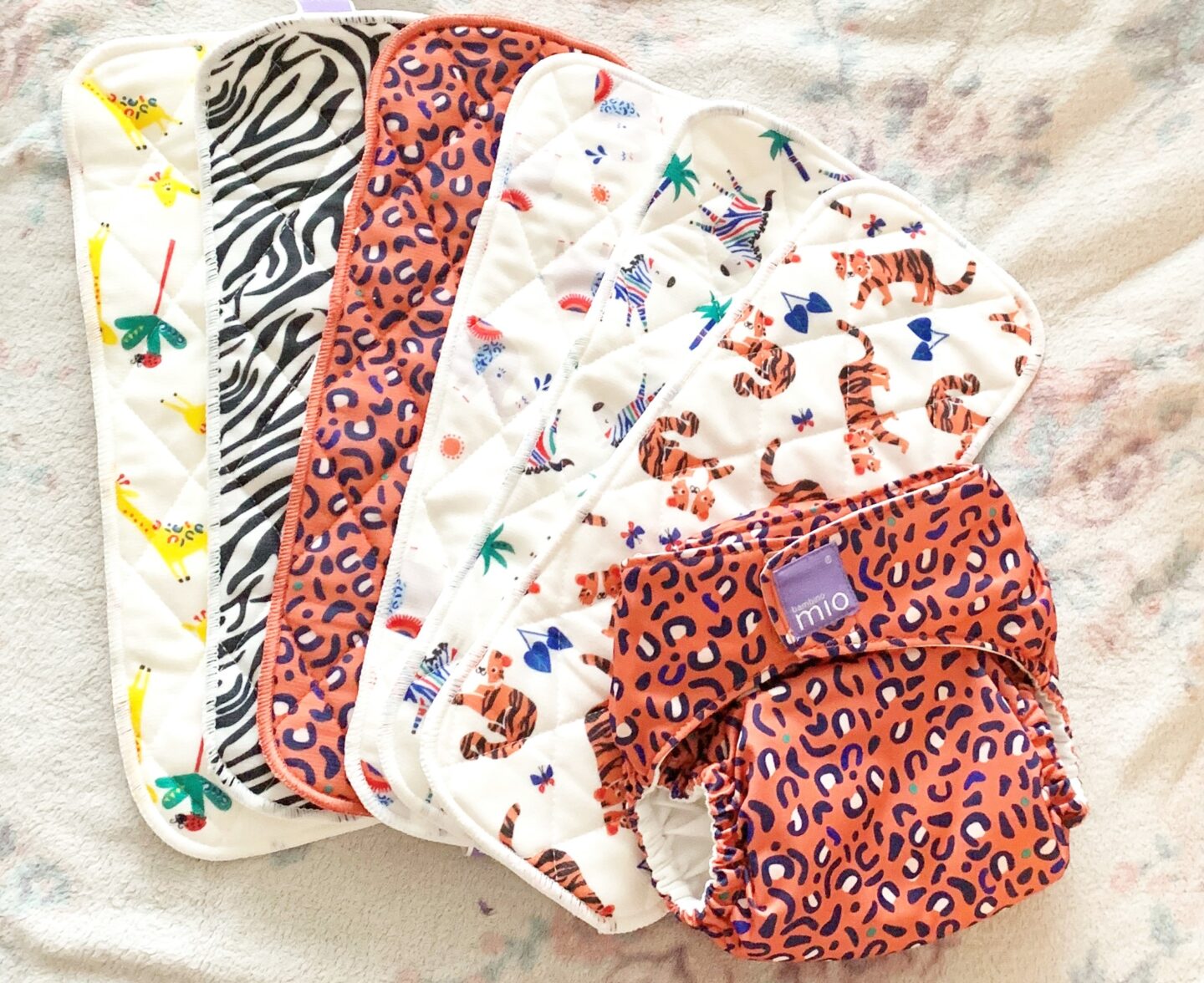
It’s important to remember when getting started with cloth nappies that you don’t need to go all in straight away. If you just use one reusable nappy a day then that is 365 disposable nappies you are keeping out of landfill each year. As they say at Tesco, every little helps. There are nappy libraries that can be really useful to help you settle on the type of reusable nappy you want to use. Nappy libraries often loan starter packs of nappies and the person running the library will be able to share all their cloth nappy knowledge with you and demonstrate how to fit a reusable nappy properly. Cloth nappies aren’t cheap when compared to the price of a single disposable nappy BUT you need to keep in mind you will only be buying this nappy once, you won’t be chucking one in your trolley every week when you do the food shop over the next two years. I have approximately 30 nappies and this is way more than we need. I wash them about every 3 days and they usually take 24 hours to dry and I think only once in a whole year I have been in a situation where Tilly needed a change and I had no clean nappies.
Where to buy reusable nappies.
We decided to use all in ones and pocket nappies when getting started with Tilly. I bought £100 worth of brand new Bambino Miosolo nappies and got my money back from Swansea Council using their reusable nappy scheme. All in one nappies are most like a disposable as the absorbent layer is already sewn in, the only thing you have to do is add extra boosters if you need more absorbency. Pocket nappies are a waterproof cover with a ‘pocket’ in the back where you stuff in the absorbent inserts and boosters. Inserts are made from different materials including bamboo, micro fibre and hemp. We use mostly micro fibre boosters and inserts and we’ve had no problems. Some parents prefer to use the more natural fibres but it’s totally up to you; what suits one baby may not be the best option for your child.
I bought Tilly’s Miosolos from the Bambino Mio website and have also picked up a few of the newer prints when they’ve been available in Aldi during a special buy baby event. Facebook is a great place to buy nappies second hand and I bought a big bundle of pocket nappies with inserts, boosters and reusable wipes from Facebook Marketplace for £50. You mostly have to buy reusable nappies online, new and preloved, but some brands like Bambino Mio, Tots Bots and Kit and Kin are appearing more often on the High Street in shops like Boots and some supermarkets.
How to use a cloth nappy.
Putting a cloth nappy on your baby does take a bit of getting used to but once you’ve figured out how to get a good fit it’s as simple as putting on a disposable.
Here are some quick tips.
1. Watch this video on YouTube on how to correctly fit a cloth nappy
2. If the nappy marks your baby’s skin then it’s too tight, try readjusting your fit around the waist.
3. If the nappy leaks then check you’ve got a good fit around the knicker line, if there’s a gap between baby’s thigh and the nappy then it’s likely to leak.
4. Experiment with absorbency and try boosting a nappy with extra absorbency before deciding it’s just not working properly.
5. Reusable nappies need to be washed before their first use to kick start their absorbency. If you don’t wash the nappy before using it for the first time it is more likely to leak.
6. Velcro nappies are quicker and easier to put on than a nappy with poppers. Keep in mind that Velcro will be easier for your baby to unfasten when they are old enough to start exploring. This isn’t a big issue if your baby wears a vest with poppers and can’t get to their nappy.
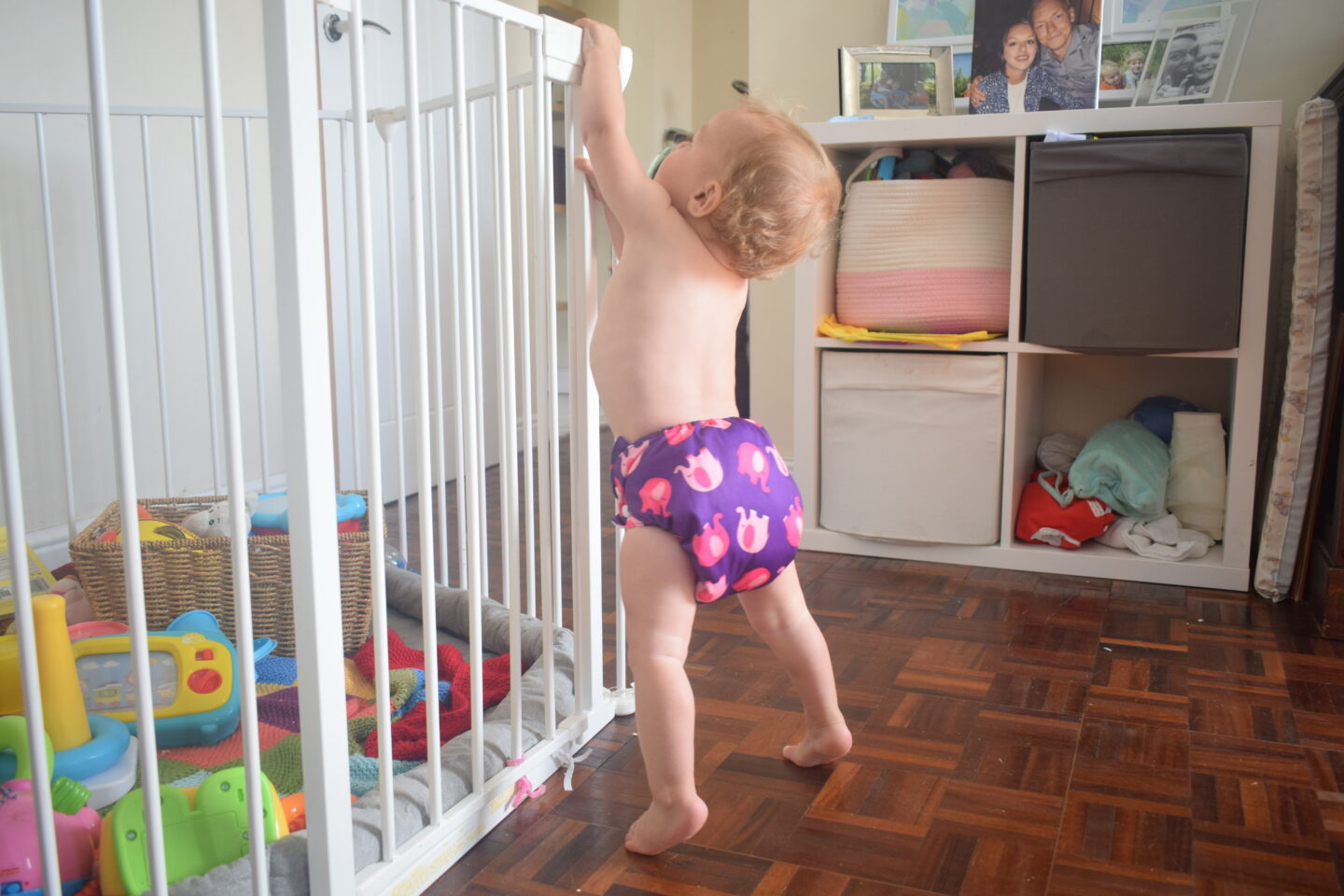
How to wash reusable nappies.
So, I know you’re all still wondering what happens to the poo, right? Well, good news. Up until your baby is weaning, you don’t have to do much at all. Breastfed baby poo just washes off the nappy in the washing machine, it’s mostly water anyway and in my experience doesn’t stain the nappies. When baby starts weaning it gets a bit grosser as the poo gets lumpier and the nappies can’t go in the washing machine like that. You might want to use a biodegradable liner or reusable fleece liner to catch the poo. These aren’t totally necessary if you don’t mind using a scabby knife to scrape the poo off or, if you’re lucky, you might be able to just plop the poo off the nappy straight into the toilet. If you use a liner then you can easily dispose off the poo as lots of the biodegradable liners can be flushed down the toilet like toilet paper (always read the packaging to check if they are safe to flush) or put into a biodegradable nappy sack.
Some cloth nappy users will scrape the poo off like I mentioned above or use the power of the toilet flush or the shower (if it reaches the toilet) to blast the poo off the nappy into the toilet. The nappy doesn’t have to be completely poo free before it heads to the washing machine but you want to get the majority of it off and have no lumpy bits.
Here is my washing routine for cloth nappies
1. All dirty nappies are put in a nappy bin (bucket with lid and mesh laundry bag) and when the bin is full they go in the wash.
2. I set the machine to a rinse cycle with a medium spin and rinse the nappies. This cycle take 20 minutes on my machine.
3. After the rinse I put the nappies on the longest cycle (my machine is the intense cycle, lasting about 2.5hours) and set the temperature to 60 and again use a medium spin speed.
4. I use non bio powder. It’s important not to use gel or liquid or fabric softener as this can apparently build up in the nappy over time and affect the absorbency. I use the dosage on the box for heavily soiled clothes and after a years use none of Tilly’s nappies or wipes are stained.
5. Once washed I either hang the nappies out on the washing line if it’s dry or on the clothes rail in the house if it’s cold. I use micro fibre nappies so they dry quite fast (usually within a day) and the few bamboo nappies I have take a lot longer to fully dry.
The main things to remember when washing reusable nappies is RINSE first and use non bio POWDER . Remember to wash at 60.
Washing cloth nappies seems like a big deal but it’s honestly not, you get used to it. With a baby in the house the washing machine is going a lot of the time anyway and if your nappy stash is big enough you only need to do an extra one or two washes a week.
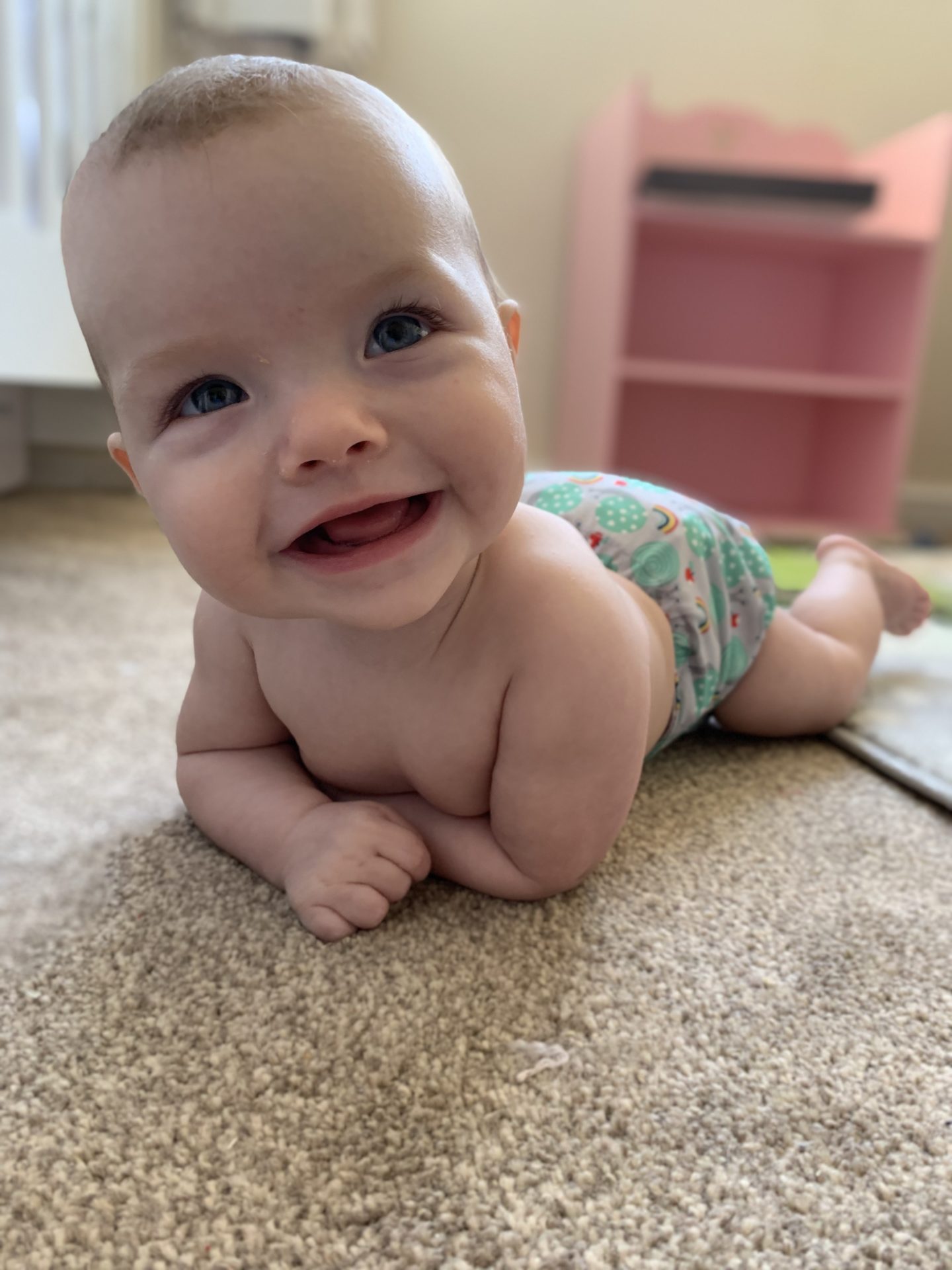
The basics to getting started with cloth nappies.
I appreciate there is a lot of information in this post so I am just going to quickly go over the basics to using reusable nappies again.
1. Research different types of cloth nappies and different brands before you buy. If possible, get to your local nappy library for advice and to try some nappies out.
2. Be prepared to not get it right straight away. It takes practice to perfect fitting a cloth nappy but once you work it out it’s easy.
3. Wash your nappies properly by putting them through a rinse cycle first, using powder and washing at no higher than 60.
The nappy brands we use are Bambino Miosolos with micro fibre boosters for every day use. Wonderoos and Littles and Bloomz pocket nappies with poppers for a more secure fit. Totsbots Bamboozle nappies with a Peanut wrap for bedtime. (Note, we only have 3 bedtime nappies so most nights Tilly is in a disposable but as I said earlier, every cloth nappy you use is one less disposable heading to landfill).
I have found the following Facebook groups really useful for cloth nappy advice and for buying second hand reusable nappies: Cloth bum mum – fluffy advice and chat Cloth bum mum Sales UK
If you use Instagram then hashtags like #clothbum #clothmadesimple #clothnappies are a great place to find other parents using cloth nappies with their babies. The community is very friendly and people are always happy to answer your questions. Also, while you’re on Instagram if you head to my profile, in the Cloth Nappy highlights I have a step by step washing video, videos showing how to stuff reussable nappies and you can see my first ever day as a cloth bum mum trying to figure out how to use a pocket nappy!
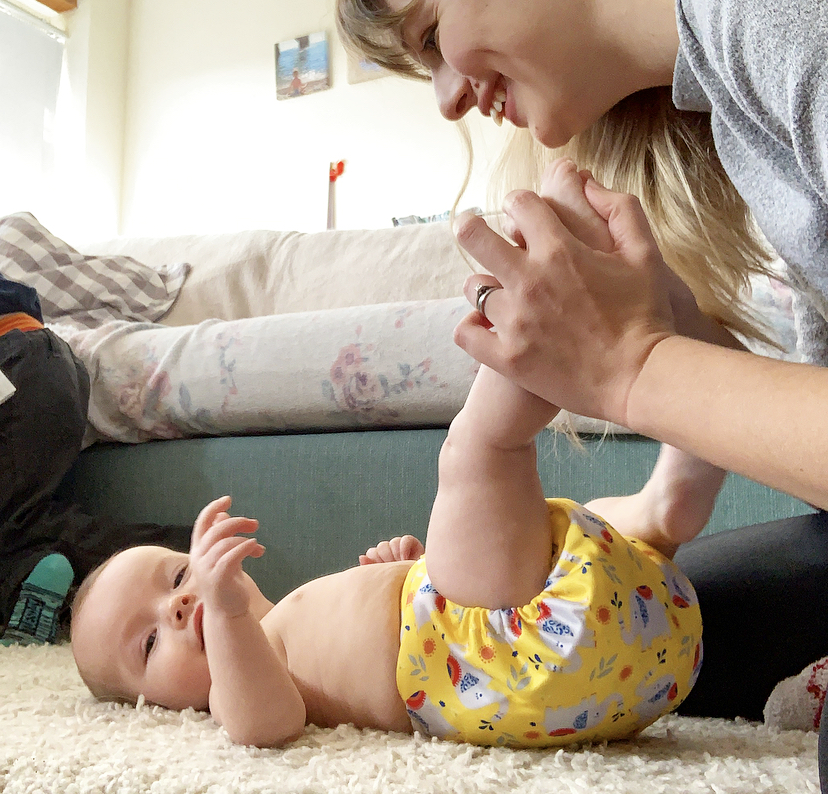
The important thing to remember is cloth nappies don’t have to be complicated or expensive. There are so many gorgeous prints to choose from and every reusable nappy you use will help the environment. Switching to cloth nappies is an easy way to be more eco friendly as a family and if you go on to have another baby in the future then you will literally be stopping thousands of nappies from going to landfill. You don’t need a massive stash of nappies, we have about thirty and that’s way too many.
If you ever need advice the Internet is full of plenty of people who are more than happy to help. Most nappy brands have social media accounts so it couldn’t be easier to ask about a particular nappy and get advice straight from the brand. If I could go back in time I would choose cloth right from when Leo was a baby. Switching to reusable nappies has been really easy for us as a family. I hope you have found this beginners guide to reusable nappies useful and it helps you to get started on your cloth nappy journey.
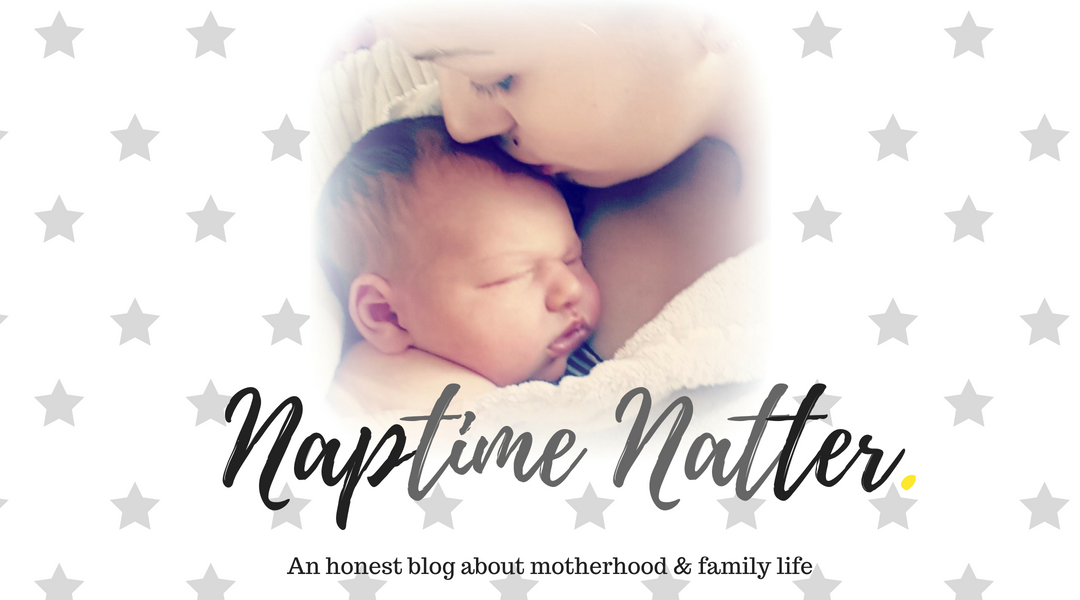

Great advice here for anyone considering it. I wish I’d used them with my son 13 years ago but I honestly thought it would be too much like hard work.
I wish though from an environmental perspective that I had.
This is really helpful x